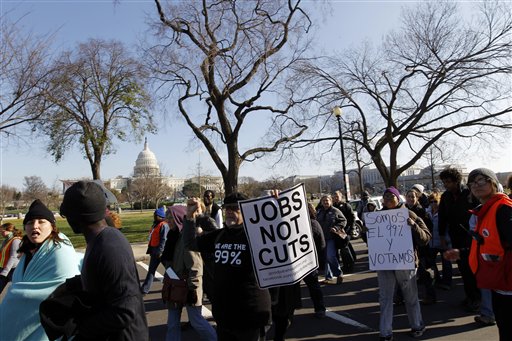More than five years after the 2008 financial crisis, the Federal Reserve announced its plans not to scale back bond-buying this week. While the US economy remains unresponsive to the Fed’s quantitative easing (QE), emerging markets are in fact benefitting from US monetary policy in several ways. Countries such as China, India, and Brazil have easier access to capital, are producing goods cheaply, and are increasingly more attractive as investment destinations.
No taper for the time being
If, as Robert Gordon of Northwestern University predicts, the US recovery lasts another 4-5 years it will be double the length which has been standard since WWII. Congress and the White House’s lacklustre response to the crisis, and the subsequent political paralysis afflicting DC, have led the Federal Reserve to continue to counter unemployment by stimulating the economy through bond purchases. This means the US central bank’s intervention will continue, un-tapered, driving down interest rates and making capital more available. While this may help the American economy some, it is certainly helping emerging markets as well.
Dollars funding emerging markets
For governments, the Federal Reserve’s quantitative easing makes it cheaper to borrow in dollars, and thereby allows them to finance large deficits. India, for example, has external dollar debt of 57.2%, followed by the rupee at less than half that amount, 24%. In other words, if QE were to end, the value of India’s debt would significantly increase as the dollar’s value rises. Given the $172 billion India needs to repay by March of next year, and the government’s plans to increase spending on poverty alleviation, Dehli needs dollar bonds to remain at low yields to avoid a debt crisis.
When the Fed eventually decides to scale down its bond-buying, it will most definitely have the effect of drawing capital, and therefore investment, away from emerging markets. The OECD has already concluded the Fed’s anticipated drawing down of bond buying is partially responsible for the slowing of growth in emerging economies, at the same time as advanced economies leave recession.
This is occurring because while the US economy is under stimulus, interest rates fall because money is more readily available. So investors go overseas for higher returns, providing cash for businesses in emerging markets to expand or upgrade. The danger for developing countries comes when investors anticipate a tightening of monetary policy, with higher interest rates in the US, and eye a return to North America. Prompted by the Federal Reserve’s talk of reducing quantitative easing, Brazilian, Indian and South African exchanges all dipped in August, but recovered soon after.
Additionally, commodities like oil which are traded using dollars are essential for industrializing economies. Readily-available (therefore cheap) dollars help to make these commodities more affordable for emerging market industries. Quantitative easing thus has a subsidy effect on these products, making them more affordable and the businesses using them more profitable. A Federal Reserve tapering would lead to increased production costs for manufacturers overseas, thereby making them less competitive and cutting into their profit margins.
China’s long-term vision
This relationship has not gone unnoticed to governments around the world. In reaction to the Fed’s decision to continue quantitative easing, Chinese officials expressed approval. China may be encouraging more bond-buying as a way to ensure the supply of dollars to US businesses remains steady and affordable, thereby allowing them to buy Chinese and other foreign-manufactured goods. Their preference could also indicate the country is making a shift away from a manufacturing export-led model. This possibility becomes particularly likely given the Chinese economy’s slowdown earlier this year, which the government claims is linked to a wider agenda of structural transformation.
American losses, BRICS gains
As the Federal Reserve tries to reduce unemployment, companies overseas are expanding thanks to investors leaving the US and cheaper dollar-denominated commodities. Emerging market governments are able to finance large dollar deficits thanks to low interest rates, and American consumers continue to have the money to buy Chinese-made goods. This has the effect of helping BRICS countries like China, India and Brazil to grow even faster, even as the US struggles.
Of course, when the Federal Reserve eventually ends its bond-buying program, countries like India, China and Brazil will need to address the consequences, including higher borrowing costs, reduced demand from American consumers and investment returning to US businesses. How they do so is the next big question, but for now the Federal Reserve will keep buying and emerging markets will keep benefitting.




